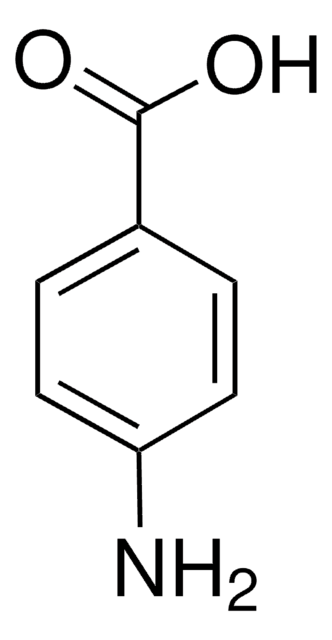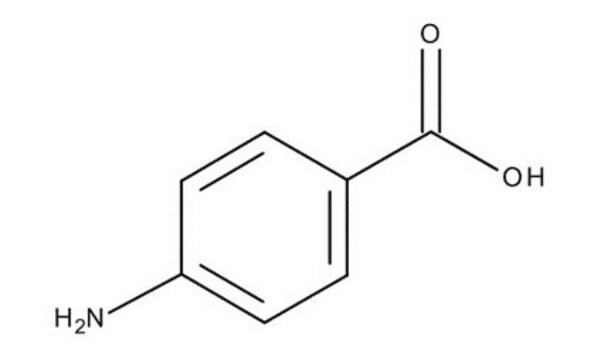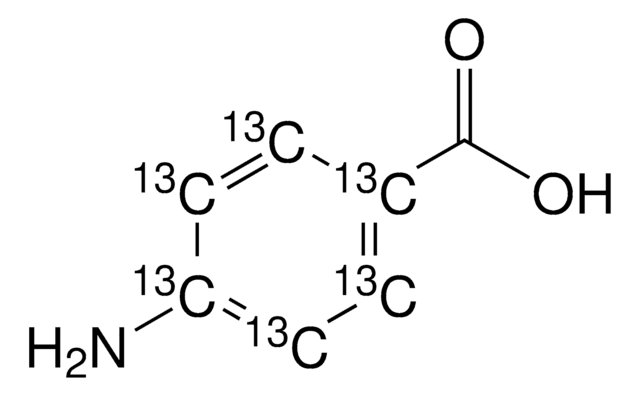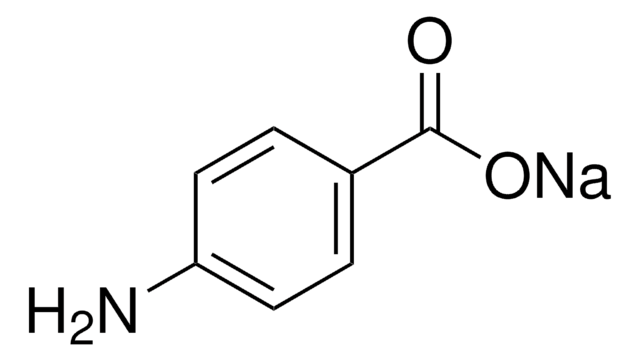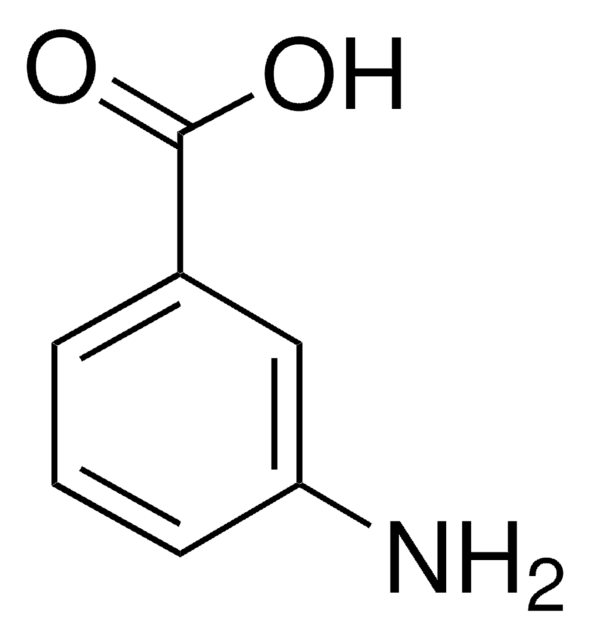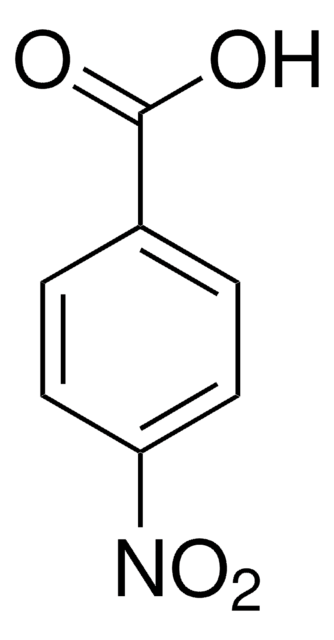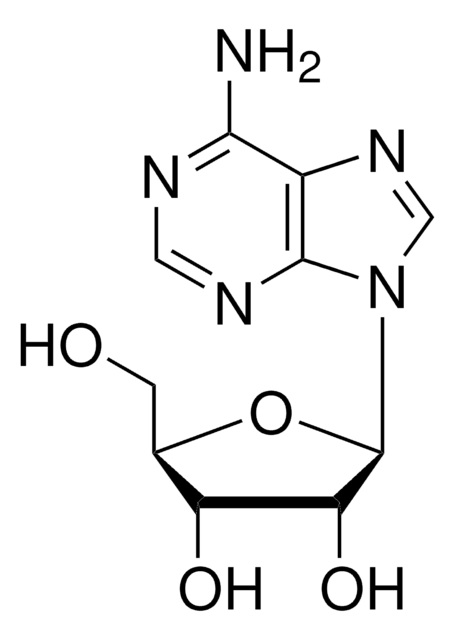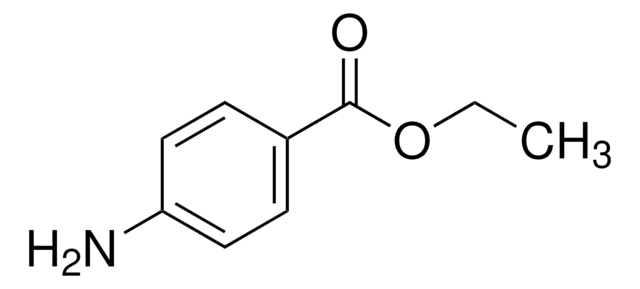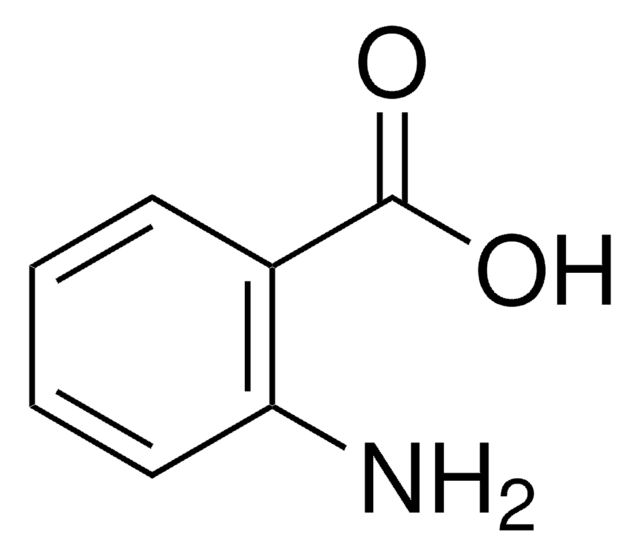01973
4-Aminobenzoic acid
analytical standard
Sinonimo/i:
PABA, Vitamin Bx, Vitamin H1
About This Item
Prodotti consigliati
Grado
analytical standard
Livello qualitativo
Saggio
≥98.0% (HPLC)
Durata
limited shelf life, expiry date on the label
tecniche
HPLC: suitable
gas chromatography (GC): suitable
Punto di fusione
186-188 °C
187-189 °C (lit.)
Densità
1.374 g/mL at 25 °C (lit.)
applicazioni
cleaning products
cosmetics
environmental
food and beverages
personal care
Formato
neat
Stringa SMILE
Nc1ccc(cc1)C(O)=O
InChI
1S/C7H7NO2/c8-6-3-1-5(2-4-6)7(9)10/h1-4H,8H2,(H,9,10)
ALYNCZNDIQEVRV-UHFFFAOYSA-N
Cerchi prodotti simili? Visita Guida al confronto tra prodotti
Applicazioni
- 4-Aminobenzoic Acid (PABA) in Pharmaceutical Development: Recognized as a valuable biochemical research reagent, 4-aminobenzoic acid is extensively used in the synthesis of various pharmaceutical compounds. Its role as a building block in drug design is crucial for developing new therapeutic agents, particularly in the fields of dermatology and oncology (Clegg and Nichol, 2024).
- UV Protection Research: PABA is renowned for its UV-absorbing properties, making it a key ingredient in sunscreen formulations. Ongoing research evaluates its efficacy and safety, ensuring optimal protection against UV radiation and its potential role in preventing skin cancer (Wang et al., 2024).
- Enzyme Inhibitor Studies: As a nucleoside enzyme inhibitor, 4-aminobenzoic acid is pivotal in biochemical studies that explore the inhibition mechanisms of specific enzymes. These studies are fundamental for understanding disease pathways and developing enzyme-targeted therapies (Buch et al., 2024).
- Vitamin B10 Research: Also known as Vitamin B10, PABA is studied for its role in human nutrition and its therapeutic effects, including in the management of fibrotic skin disorders and hair growth promotion. Research continues to uncover the broader health benefits of this compound (Berto et al., 2024).
- High-Purity PABA for Laboratory Applications: In scientific research, high-purity 4-aminobenzoic acid is essential for conducting precise and controlled experiments, particularly in studies related to its pharmacological properties and its interaction with other biochemical substances in the body (Park et al., 2024).
Confezionamento
Altre note
The collision cross section (CCS) measurement was provided by Waters Corporation, using the SYNAPT XS mass spectrometer.
For a description and overview of how ion mobility enables the measurement of the CCS of an ion visit ims.waters.com.
Further information on the SYNAPT XS mass spectrometer can be found on the IMS microsite and product webpage.
TWCCS measurements are expected to be within 2% of this reference value.
P/N 01973 is part of the Waters Extractables & Leachables UNIFI scientific library which can be downloaded from Waters Marketplace.
Indicazioni di pericolo
Consigli di prudenza
Classi di pericolo
Aquatic Chronic 3
Codice della classe di stoccaggio
11 - Combustible Solids
Classe di pericolosità dell'acqua (WGK)
WGK 2
Punto d’infiammabilità (°F)
339.8 °F - closed cup
Punto d’infiammabilità (°C)
171 °C - closed cup
Scegli una delle versioni più recenti:
Certificati d'analisi (COA)
Non trovi la versione di tuo interesse?
Se hai bisogno di una versione specifica, puoi cercare il certificato tramite il numero di lotto.
Possiedi già questo prodotto?
I documenti relativi ai prodotti acquistati recentemente sono disponibili nell’Archivio dei documenti.
I clienti hanno visto anche
Protocolli
Separation of Uracil; p-Aminobenzoic acid; Acetylsalicylic acid; Dehydroacetic acid; Benzoic acid; Methyl paraben; 3-Fluorobenzoic acid
Il team dei nostri ricercatori vanta grande esperienza in tutte le aree della ricerca quali Life Science, scienza dei materiali, sintesi chimica, cromatografia, discipline analitiche, ecc..
Contatta l'Assistenza Tecnica.